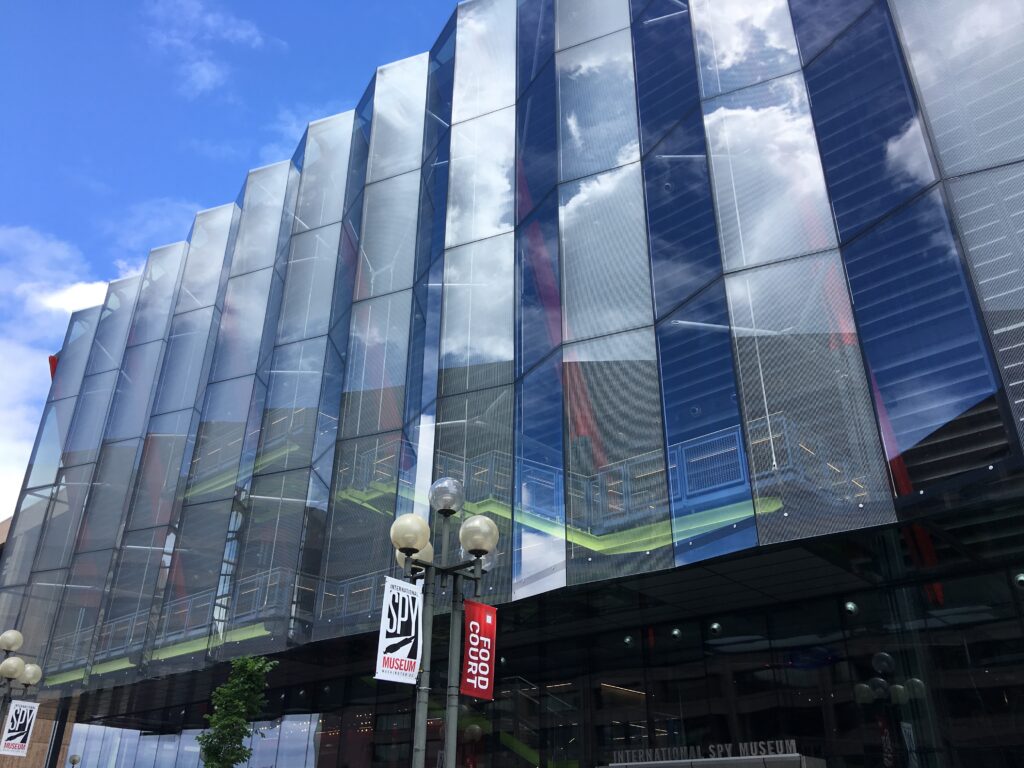
The new International Spy Museum in Washington D.C. is, not surprisingly, an institution in disguise, an undercover operation executed in plain sight.
The museum’s beveled glassy front is more stylish than its neighbors–the bland façade of the Post Office to the west, the neo-expressionist face of the General Services Administration to the north. Yet the Spy Museum is not out of place. In the soulless bureaucratic landscape of L’Enfant Plaza, a temple of public service propaganda fits right in.
Inside the revolving doors, the first thing you see is James Bond’s tricked out Aston-Martin approaching from the left, while the original U.S. drone, buzzes overhead. This entertaining emporium of fact and fiction tells a cover story, albeit one endowed with “plausible deniability.” It covers the disturbing realities of secret intelligence agencies with the reassuring message: we protect you. Maybe it’s true, you think.
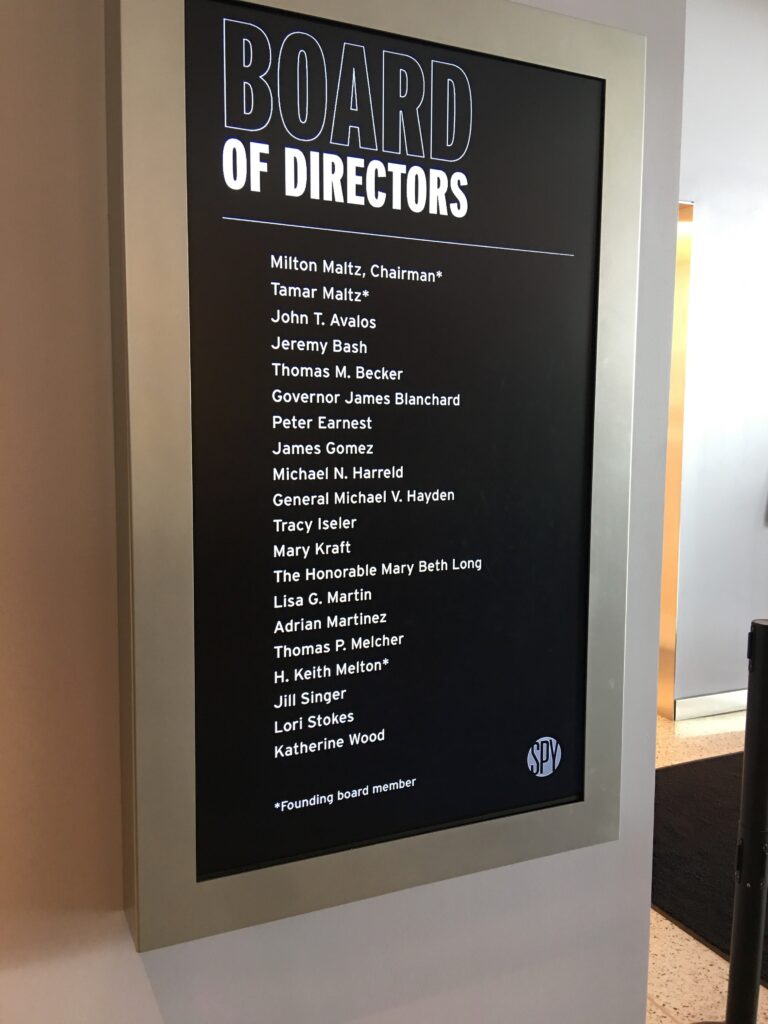
The museum’s Board of Directors, displayed next to the elevators, skews toward former intelligence barons with a sprinkling of Hollywood and Capitol Hill. The names of James Clapper and Michael Hayden, George Tenet, and Robert Gates appear, along with Robert DeNiro, director of the excellent CIA movie, The Good Shepherd, Matthew Rhys the intense star of The Americans, and Joe Weisberg, the former CIA officer who created The Americans. There’s a conservative Republican congressman, Will Hurd, a liberal former Democratic governor, James Blanchard, and an insider columnist, David Ignatius. Message: you’re in for a good time with good company.
The cheerful docent compelled me to take a black and yellow badge and submit to the interactive experience of taking a cover name and identity. As this game didn’t seem to be optional, I assumed the identity of “Ari Lee,” a photographer from Mexico City, in search of a terrorist group in Indonesia. In the darkened elevator I briefly wondered if I, as Ari Lee, was supposed to be a man or a woman. Subliminal message: CIA is gender fluid.

The lavish interactive exhibits on the fourth and five floors, don’t scant the deception and violence inherent in secret intelligence work. They presents them on a human scale factually, fictionally, and, above all, emotionally. Intelligence work, proclaim a banner, is all about Loyalty, Risk, Seduction, Cunning, Deception, and Trust.
The installation on Risk stars Morten Storm, an Danish jihadist turned undercover informant. The installation on Deception celebrates Vladimir Alekseenko, a Russian “master of technical countermeasures” in the 1930s. They seem to be admirable people.
Do the high school kids passing through have a “need to know” that Strong helped locate Anwar Awlaki, a jihadist preacher and American citizen, who was tried and convicted by a secret process and executed in a drone strike ordered by President Obama in 2015? Do they need to know that Alekseenko loyally served the Soviet secret service, the NKVD, which enforced Stalinist orthodoxy with firing squads, famine, and the Gulag? They won’t learn it here.
It is more entertaining to focus on the gadgets and their stories. In 1945, a group of Russian students gave the U.S. embassy in Moscow a hand-carved wooden emblem of the United States. It took nine years for U.S. intelligence officers to realize their Soviet counterparts had stashed a directional microphone inside the emblem and were listening to their every conversation. Uncoded Message: intelligence officers can be kind of dumb.
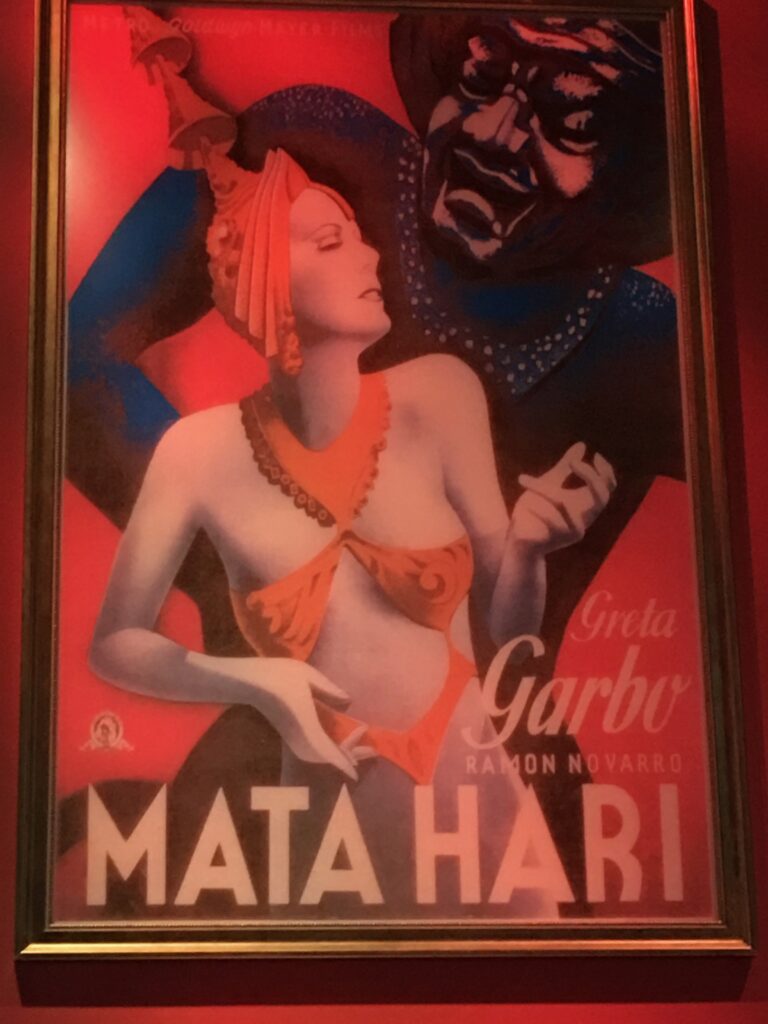
The exhibits combine the frisson of fear with the delight of the silver screen. Here’s the real pick axe that Stalin’s agents used to shatter the skull of rival Leon Trotsky in Mexico City in 1940. There are the actual steel teeth displayed the lumbering villainous giant in “Goldfinger,” the James Bond flick. Naturally, the patrons tend to prefer the fictional. The wing devoted to spy movies was jammed with people.
The blending of fact and fiction can amount to a falsification of history. The real-life Allen Dulles, CIA director who destroyed democratic governments in Iran and Guatemala–crimes we still pay for–gets the same treatment, and number of words, as the fictional Emma Peel, the svelte, kickass agent, of the 1960s TV show “The Avengers.”
Another exhibit examines the tradeoffs between security and liberty, between secrecy and oversight. NSA whistleblower Thomas Drake talks about how he tried and failed to go through official channels to expose massive contracting abuses. Edward Snowden gets short shrift but the ideal of accountability does not. Message Deciphered: the intelligence community knows it has a credibility problem.
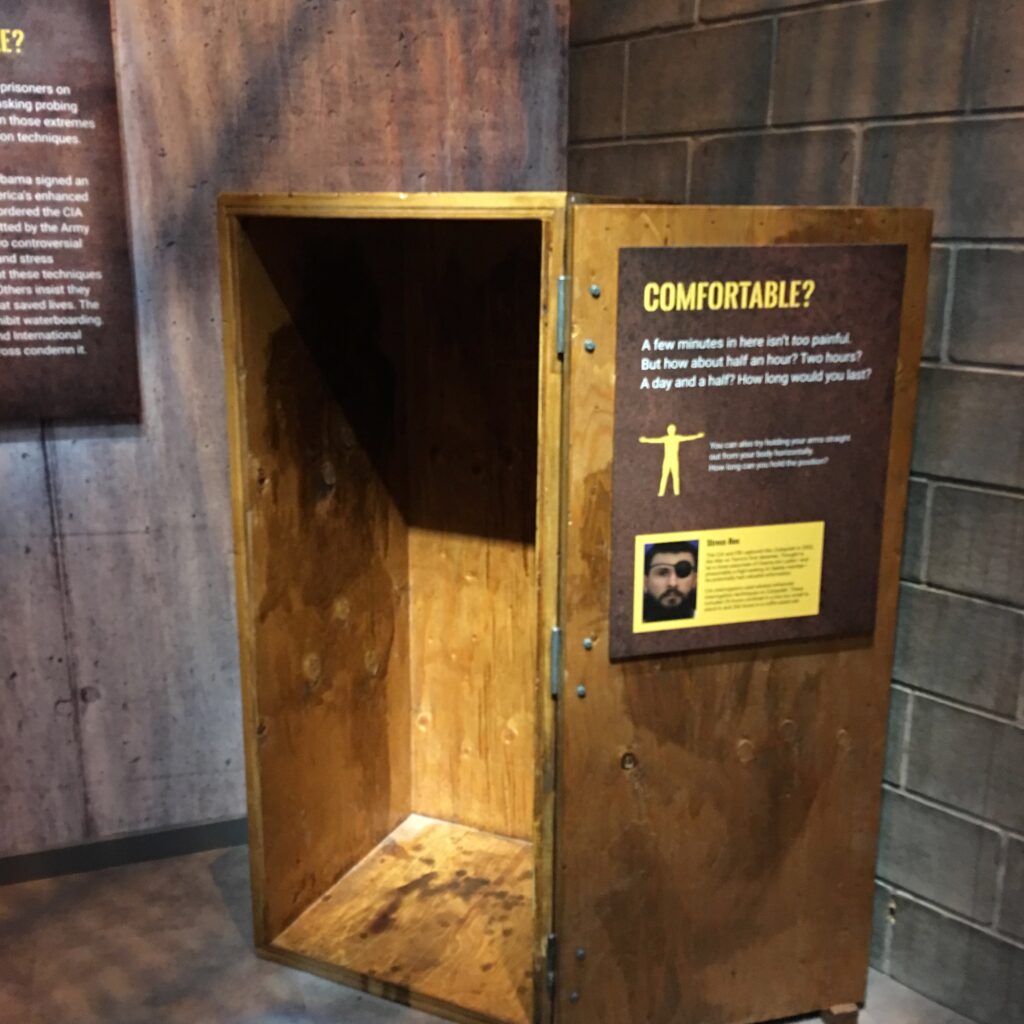
Another room examines the issue of torture with ostensible candor. It features a replica of the box, smaller than a coffin, into which al Qaeda operation Abu Zubeydah was stuffed to make him talk. U.S. officials thought he was high-ranking al-Qaeda operative who planned operations. He wasn’t. He was the equivalent of a clerk who knew little. He was tortured anyway. “Comfortable?” asks the sign on the box. Subliminal message: Terror suspects don’t deserve comfort.
On a big screen, the issue is debated with a show of balance. Law professor Alberto Mora argues that torture is repugnant to the American creed of inalienable rights. Jose Rodriguez, former CIA operations chief and mentor to director Gina Haspel, counters that torture saved lives. “Some day you will learn the whole story,” he says. In fact, the Senate Intelligence Committee reviewed the classified record in 2014 and found no examples of torture preventing a terror attack. The CIA suppressed the full report.
The exhibit ends with an opportunity to vote on the question, “Would you be willing to have the U.S. government torture suspected terrorist if they knew about future attacks?” Torture wins, 63-37 percent. Unclassified Message: Torture is a policy option.

My favorite exhibit explains the Cuban missile crisis of October 1962 via personality profiles of President John F. Kennedy (“detached” and “aristocratic”) and Soviet Premier Nikita Khrushchev (“shrewd’ and “self-made”). The usual Cold War frame of the crisis–communist aggression deterred by manly Americans–is jettisoned in favor pictures and documents tell the heart-stopping story about how the these two very different leaders managed, at the very last minute, to avoid nuclear war. This is the CIA at its best. Open Source Message: good intelligence can save the world.
And, so in its fun and sometimes fair-minded way the Spy Museum guides you to its favored conclusions and, not coincidentally, to an enormous gift shop featuring “Deny It All” t-shirts, Mata Hari postcards, handcuff necklaces, and excellent array of books. Message as advertisement: Secret intelligence is a blessing so buy a CIA shot glass for Uncle Ernie.
The Spy Museum is, in sum, a monument to the normalization of secret intelligence in a democratic republic. Like the CIA’s Twitter and Instagram accounts and emergence of former spy chiefs as cable news talking heads, the Spy Museum seeks to persuade you that the CIA and NSA are friendly neighbors and public servants, who might occasionally have to do bad stuff so you can sleep safely at night. It’s a comforting thought, except on those occasions when it’s not true.
In its ingenious way, the Spy Museum whitewashes the sinister record of the CIA not just for the history books but for public memory. Generously but astutely, the museum downplays similar crimes committed the KGB and other rival services. Educationally speaking, the Spy Museum offers a child’s view of history, an upbeat narrative of benevolent adults who vanquish villains as a better future beckons. In the vernacular of intelligence, the museum “sanitizes” the reality of secret intelligence agencies, the better to perpetuate their reign right here in Washington.
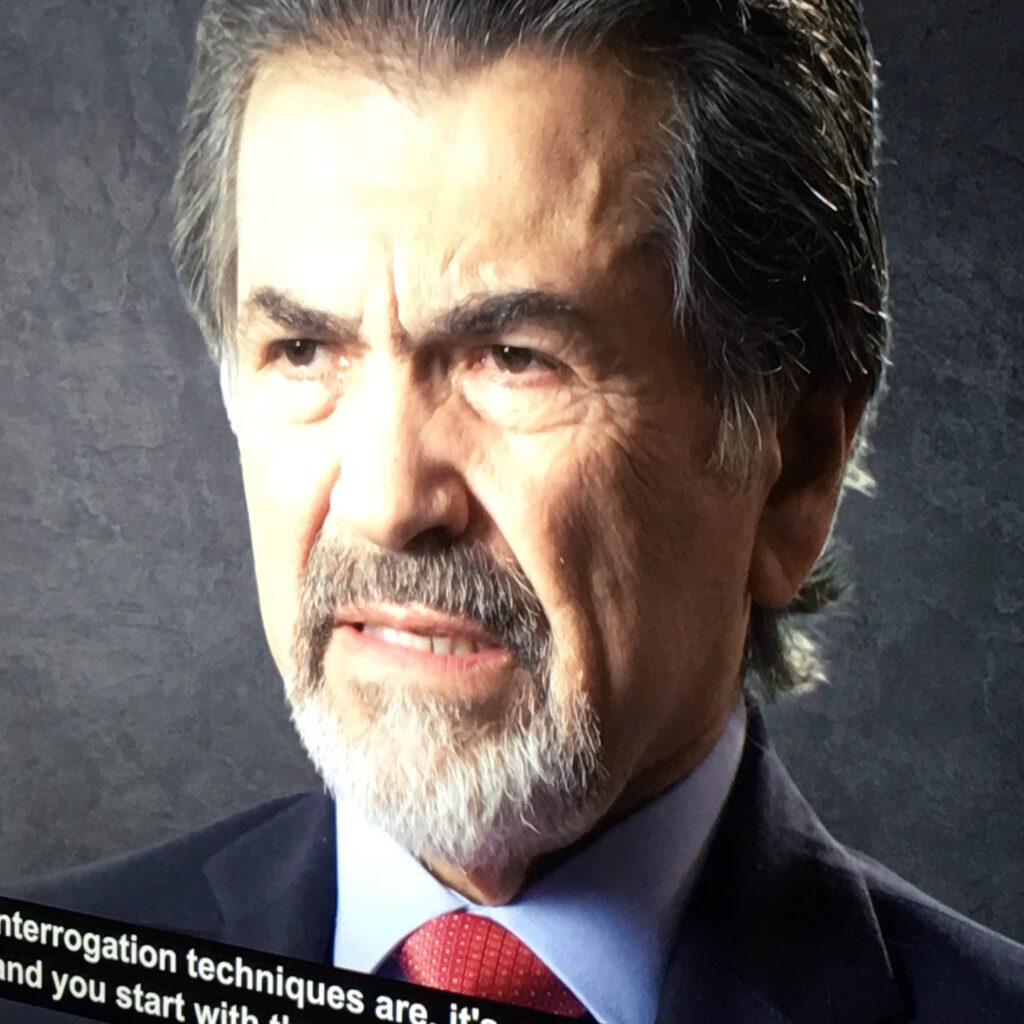
As I left with a bag full of tchotchkes in hand, I wondered what Harry Truman would think.
In September 1945, Truman abolished the wartime Office of Strategic Services (OSS), America’s first secret intelligence agency, saying he didn’t want to create an “American Gestapo.” The Gestapo, of course, was the Nazi’s secret intelligence agency. A secret intelligence agency in peacetime, Truman believed, was inherently a threat to American democracy.
Two years later, Truman reversed himself. In July 1947 he signed the National Security Act which created the CIA and installed it in temporary buildings on front of the Lincoln Memorial. In his signing statement, Truman again warned against an “American Gestapo” but accepted a secret intelligence agency as a necessary evil.
Sixteen years after that, Truman reversed himself again. In December 1963, a month after President Kennedy was ambushed, Truman called for the abolition of the clandestine service. He privately believed the CIA threat to American democracy might have become terribly real in Dallas, and he wanted to eliminate it. He was ignored.
I think Truman would see the Spy Museum for what it is: a domestic influence operation designed to quell American ambivalence about a law-breaking agency with secret powers. I think he would say it succeeds all too well.


